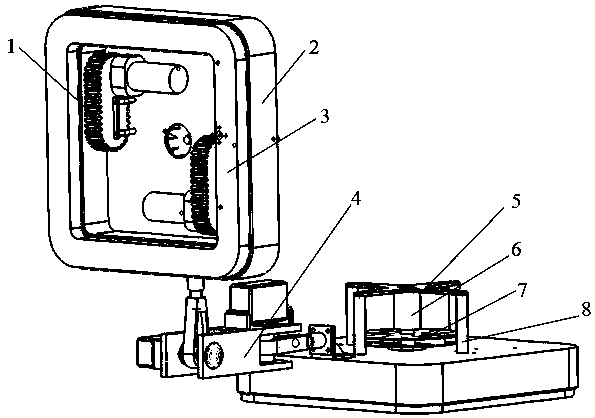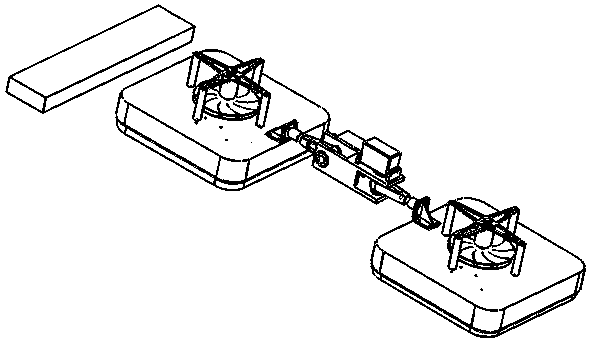An obstacle-climbing robot with wall conversion function
A wall-climbing robot and conversion function technology, which is applied in the field of negative pressure adsorption wall-climbing robots, can solve the problems of poor adaptability to walls of different materials, complex structures, and high requirements for wall finish, so as to improve work efficiency and flexibility and expand the range of activities , the effect of a wide range of application prospects
- Summary
- Abstract
- Description
- Claims
- Application Information
AI Technical Summary
Problems solved by technology
Method used
Image
Examples
Embodiment Construction
[0023] The following will clearly and completely describe the technical solutions in the embodiments of the present invention with reference to the accompanying drawings in the embodiments of the present invention. Obviously, the described embodiments are only some, not all, embodiments of the present invention. Based on the embodiments of the present invention, all other embodiments obtained by persons of ordinary skill in the art without making creative efforts belong to the protection scope of the present invention.
[0024] see Figure 1~2 , in an embodiment of the present invention, an obstacle-climbing robot with a wall conversion function includes two single-body wall-climbing robots and a pitch and yaw mechanism 4, and the pitch-yaw mechanism in the middle passes between the two single-body wall-climbing robots. The mechanism 4 is connected, and the single wall-climbing robot includes a brushless motor 6, a motor base 5, a motor support frame 8, a centrifugal fan 7, a ...
PUM
 Login to View More
Login to View More Abstract
Description
Claims
Application Information
 Login to View More
Login to View More - R&D
- Intellectual Property
- Life Sciences
- Materials
- Tech Scout
- Unparalleled Data Quality
- Higher Quality Content
- 60% Fewer Hallucinations
Browse by: Latest US Patents, China's latest patents, Technical Efficacy Thesaurus, Application Domain, Technology Topic, Popular Technical Reports.
© 2025 PatSnap. All rights reserved.Legal|Privacy policy|Modern Slavery Act Transparency Statement|Sitemap|About US| Contact US: help@patsnap.com



